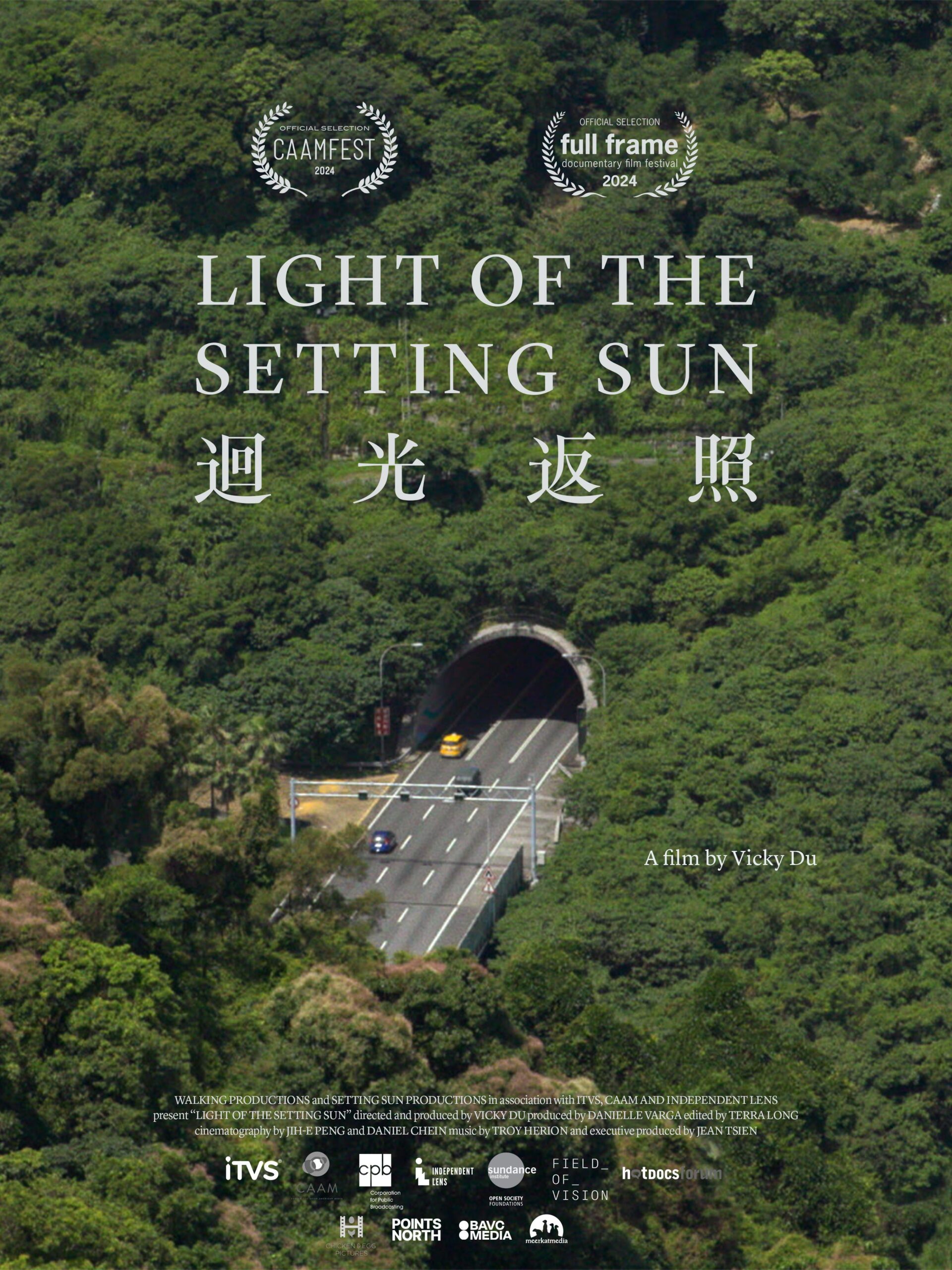by Brian Hioe
語言:
English
Photo Credit: Film Poster
New Bloom’s Brian Hioe spoke to Vicky Du, director of the new documentary, Light of the Setting Sun. Light of the Setting Sun follows Du’s questioning of the political silence in her family, tracing trauma back to the aftermath of the Chinese Civil War.
Brian Hioe: My first question is, could you first introduce yourself for those who do not know you?
Vicky Du: My name is Vicky Du. I’m a documentary filmmaker. I was based in New York for a long time, but now I’m based in Berlin. This is my first feature-length documentary, and it’s called Light of the Setting Sun.
BH: Could you talk a bit about how the project started? Because it is, of course, a very personal project.
VD: It’s a very personal project. Initially, I was thinking of just making a film following different characters from the Chinese diaspora. A queer activist in Shanghai.. My grandfather living in LA, since he was a pilot in the Kuomintang. Just to understand how the effects of the Chinese Civil War and the Cultural Revolution are still affecting us to this day.
That was the original idea. Then, my brother had a mental health breakdown and we did family therapy together; me, my brother, my mom, my dad. We did a family tree exercise. We found that everyone in our family from my grandparents, aunts, uncles, cousins from China, the US, Taiwan, Canada, we’re still dealing with trauma in some way, whether it’s like mental illness, domestic violence, all of these things.
Suddenly, I was like, Oh my god, this is exactly what I’m trying to say–just to understand how the effects of the war are still happening. And it felt like documenting my family was the best way to do it.
BH: In that sense, then the film is a way of grappling with this intergenerational trauma. That definitely poses certain challenges filming. Can you talk a bit about that?
VD: It really depends on how some family members are very open to talking about these things and some weren’t. Some, of course, I didn’t even end up filming with.
And then, of course, I had the stress of asking the direct questions. The questions I knew would potentially be very triggering.
It’s a family, we don’t talk about these things. In general, we don’t often talk that much. This was going against the current in all these different ways. Yeah, there’s a lot of the film that’s on this silence and then focusing on how the different generations talk about that differently.
BH: Did that affect, for example, some of the creative choices you made in the film, for example, in terms of composition and the way you structured it?
VD: Yes, we wanted to absolutely play with that idea on multiple levels. The biggest one is we do give the interviews a lot of space and the conversation. Even in the instances where I try to have my uncle talk to my grandmother, it just doesn’t happen.
When I try to ask direct questions to my grandmother and she’s just not answering, we just sort of show those things. That there’s this desire to not answer. But maybe in another scene, she sort of shares a different vulnerable memory and you think, okay, that’s them, that’s an answer somehow.
The narrative tries to piece together a coherent story, coherent narrative–a conversation. And otherwise, it’s just too difficult or challenging to have.
BH: I also noticed that there’s kind of a sense of place in the film.
VD: That was about trying to showcase the locations and moving from one to the next. Right? And so you kind of have suburban New Jersey and then you have a very lush Taiwan, as well as the architecture. Taiwan is so visually striking and so different. It’s tropical, it’s warm, there’s animal sounds, there’s traffic. We wanted to visualize that distinction.
BH: How did you balance being in the film and serving as a documentarian?
VD: I resisted it quite a bit initially. In the final film, my presence is really the narration, I feel. It really describes my point of view and how I’m seeing things. And that didn’t come on until the post-production process. So while we were filming, yes, it was often me asking questions behind the scenes.
We tried filming with me in some scenes. But really it’s my voice, I feel, that is now in the final film, is with the narration. Each of it was a step of my character taking up more space and taking shape and taking up more space and taking shape. But while purely while filming in the beginning, I was originally very resistant to the idea.
BH: What changed in the process of making the film? Documentary, you go in with this intention and idea, and then of course it just goes it goes in different directions.
VD: Absolutely, there were entire family members, branches of the family in Toronto, Canada, that we didn’t end up using. I also filmed the family in Dongguan in China, and then we also didn’t end up using that footage.
It was a collaborative effort with the editor, Cara Long, to sort of just shape the trajectory of this maternal line; me, my mom, my grandmothers, as well as my brother and my father, for these parts of the family, to keep it more within those relationships.
And then over time, filling the archival photographs, using archival footage, the old VHS tapes, as well as writing out my narration and sharing my point of view that way. That all came later in the post-production process.
BH: Did you see yourself as having an intended target audience for the film in that sense? For example, other diaspora or people with similar experiences?
VD: My initial feeling was that people who are also part of the diaspora, like young Asian American audiences. But then the more I’ve shown the film or the more I’ve spoken with people, the more universal I think the story is.
We’ve shown it in Amsterdam, we also showed it at a film festival in North Carolina in the United States. I get a lot of audience members, especially older audience members who are part of either Jewish diaspora or the post-World War II European diaspora, who feel a lot of kinship with my family.
We haven’t screened in Taiwan yet, but we really want to, and hopefully we’ll plan something soon. People also felt very seen by the film in a way that, as a Taiwanese American person, I wasn’t sure that it necessarily would.
BH: What comes next for the film?
VD: We’re going to screen in New York City. We’re doing a theatrical run in New York City, opening this Friday, April 18th to April 24th. And then it’s going to be on a US national broadcast on PBS in the Fall.
Between now and then, we’re working out our streaming, so we’re hoping it will be streaming in Taiwan soon. We’d also like to do some sort of theatrical screening in Taiwan and Hong Kong. Hopefully, we’ll organize those soon. But we’re looking at streaming and broadcast after that.
BH: Is there anything you would like to say in conclusion?
VD: I would love to screen it in Taiwan and see how Taiwanese audiences would react to the film and react to the family dynamics, but also the politics.
The hope with this film is that sometimes, especially when we’ve shown it to more Asian American audiences, there is a visceral or emotional response to the film. Because it does feel like a lot of these things are taboo to talk about, such as mental illness, domestic violence, and trauma from the war.
It can be very emotionally triggering to watch a family talk about these things. The hope is at least that people feel like it’s possible to have these conversations, especially with your family.
Your family has the ability to hurt you, but also make them do so much for you–to be able to hold these competing truths. That’s the hope, and that it helps people accept this or be able to grieve these types of challenges and difficulties in their families.
BH: Thank you so much.



